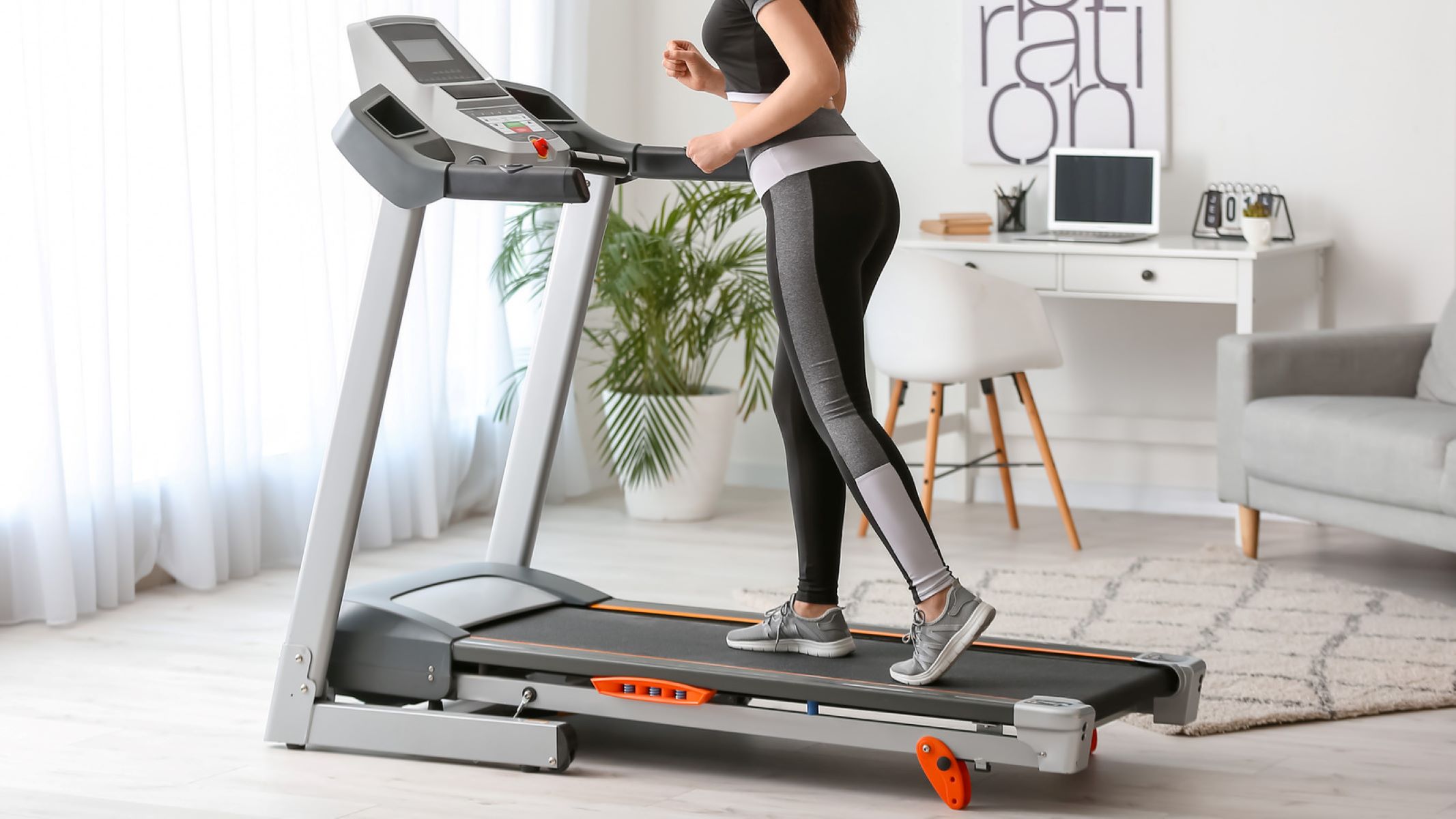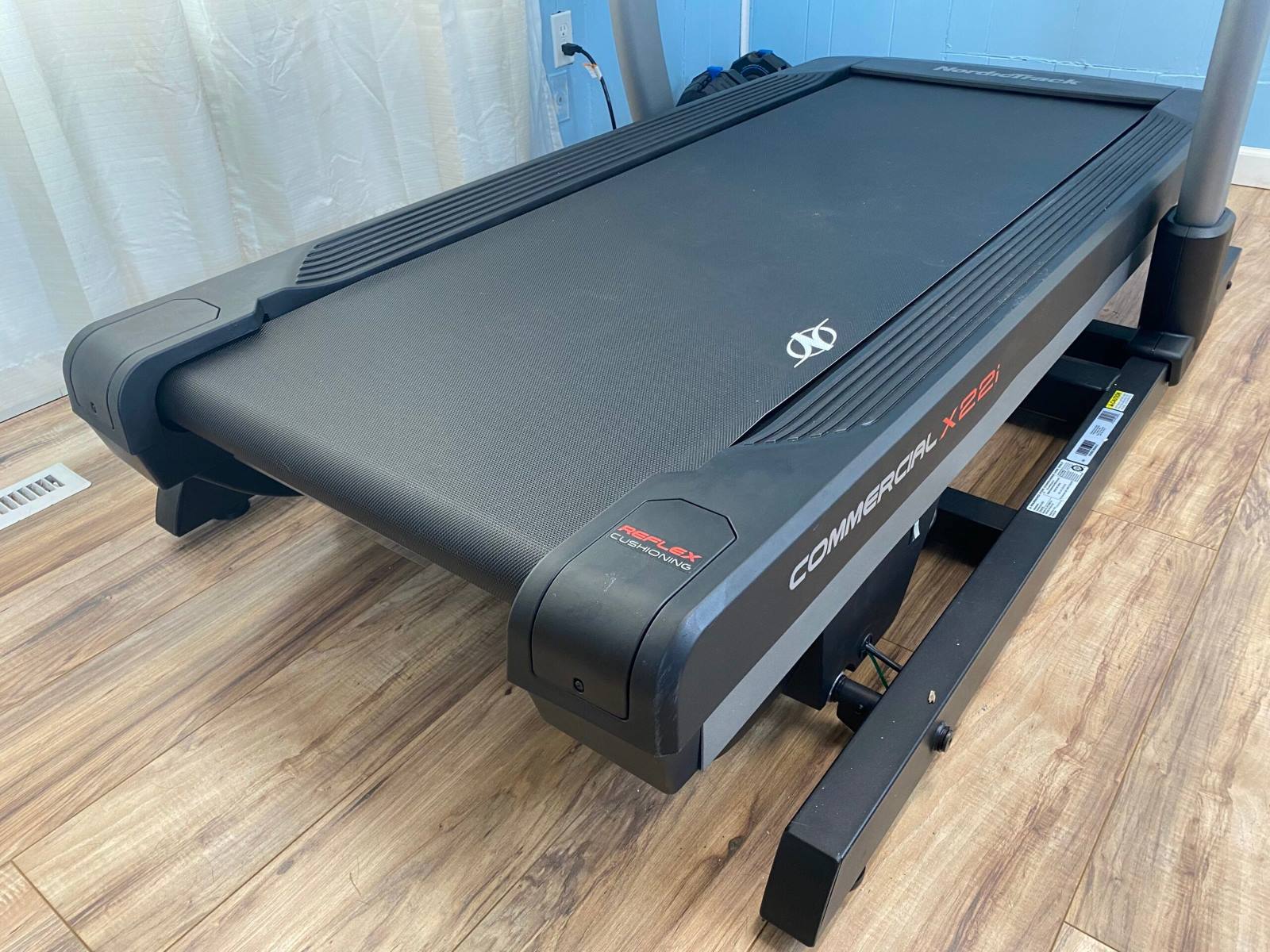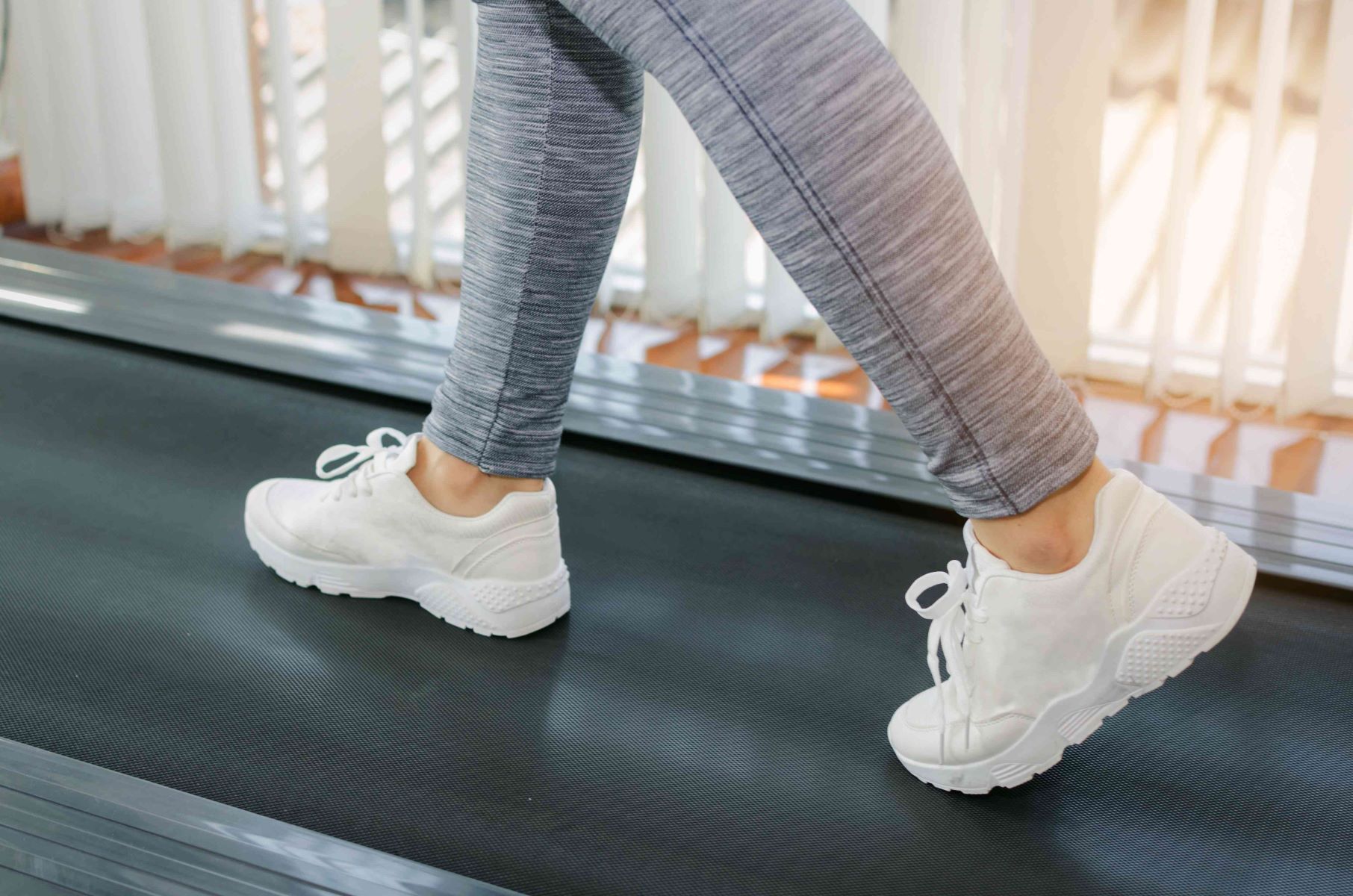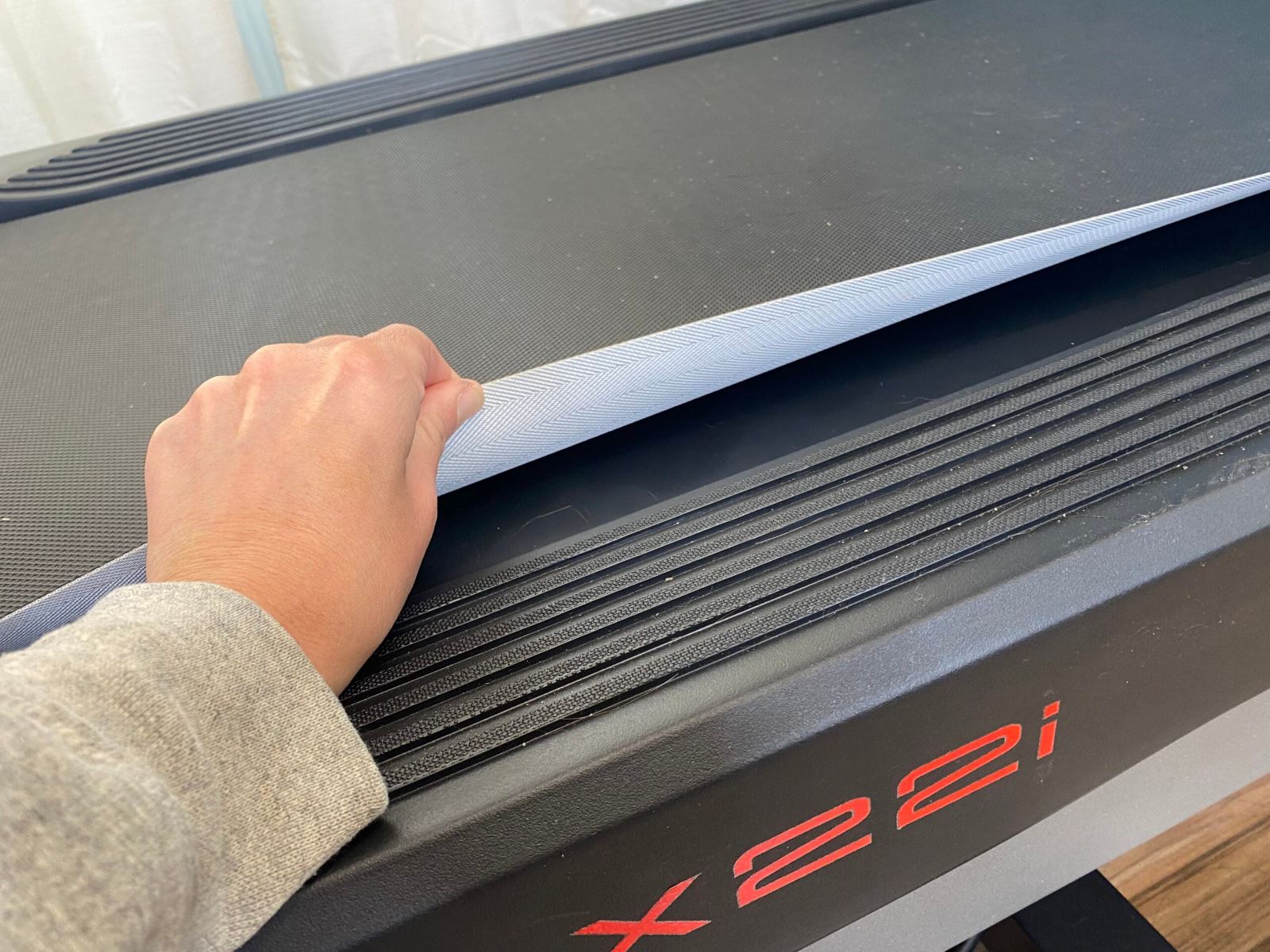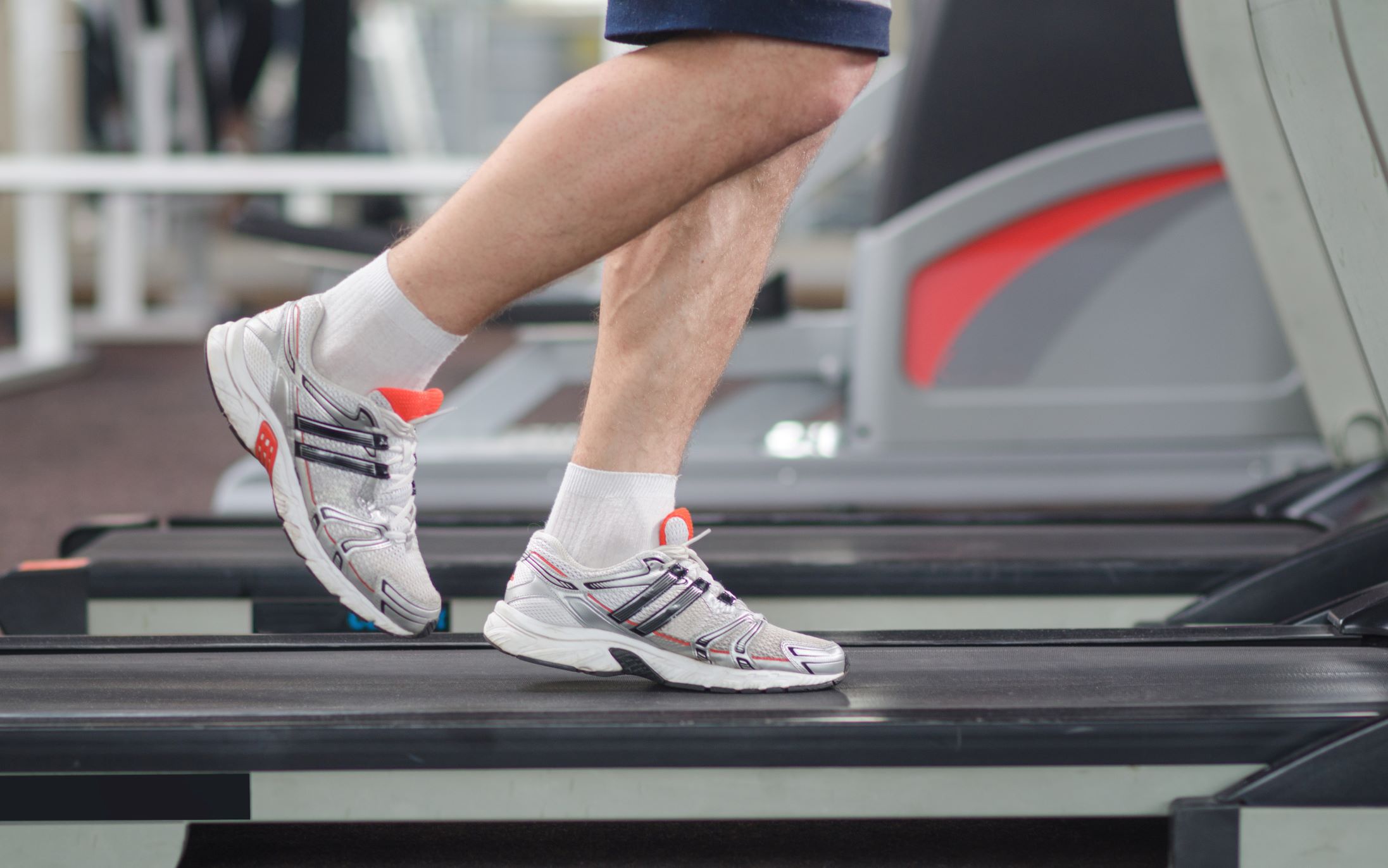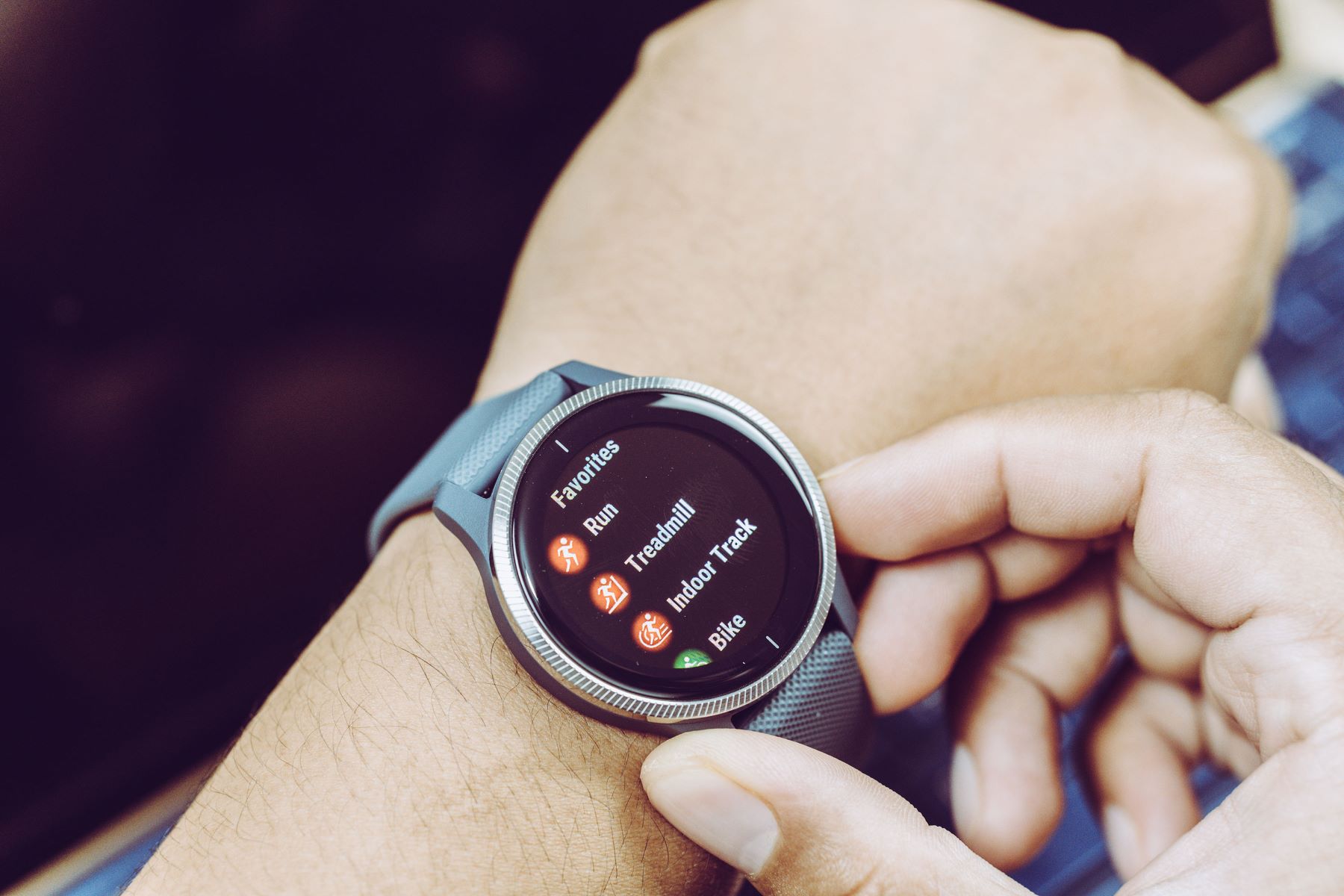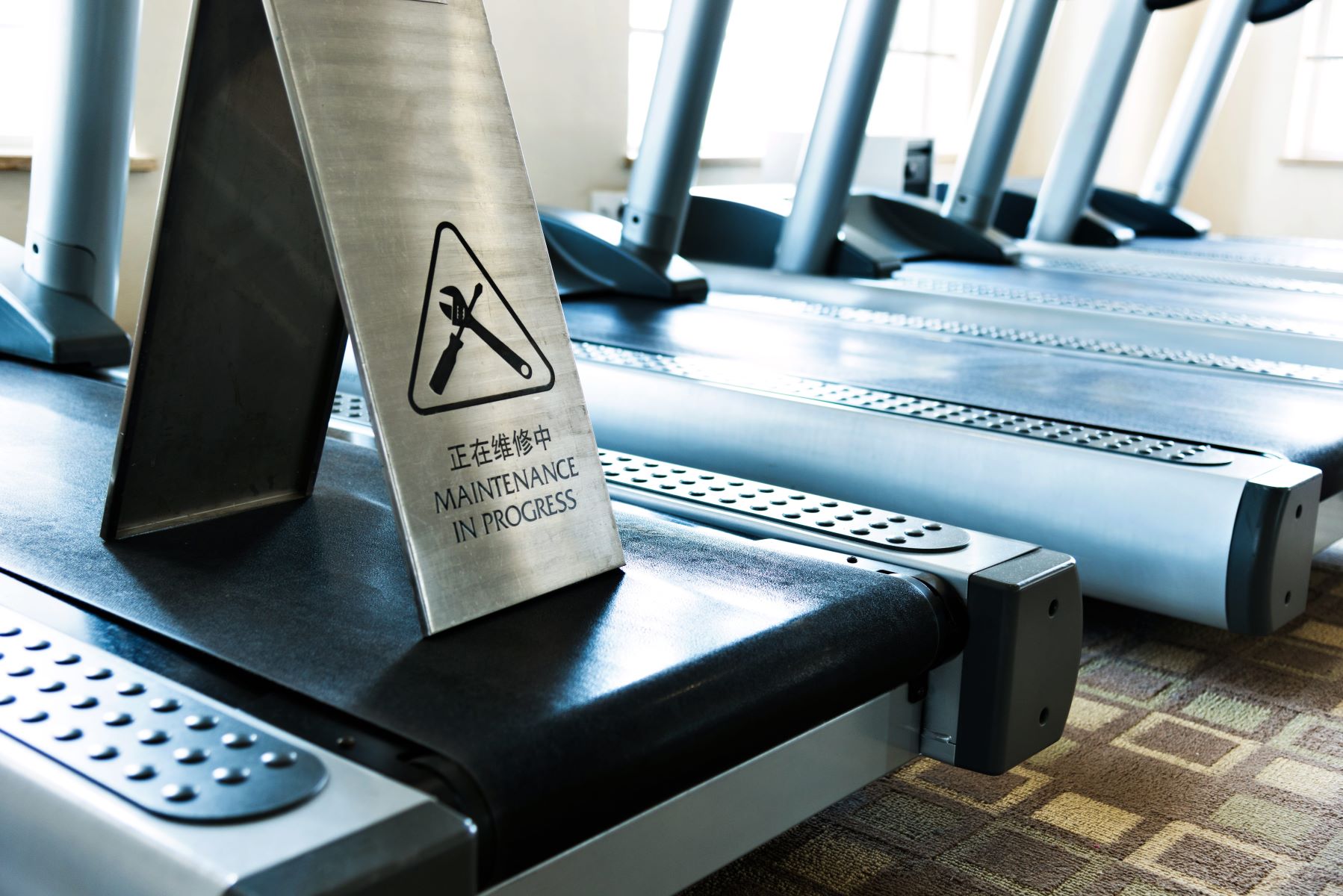Home>Misc>Featured>Why Is My Treadmill Belt Moving To One Side
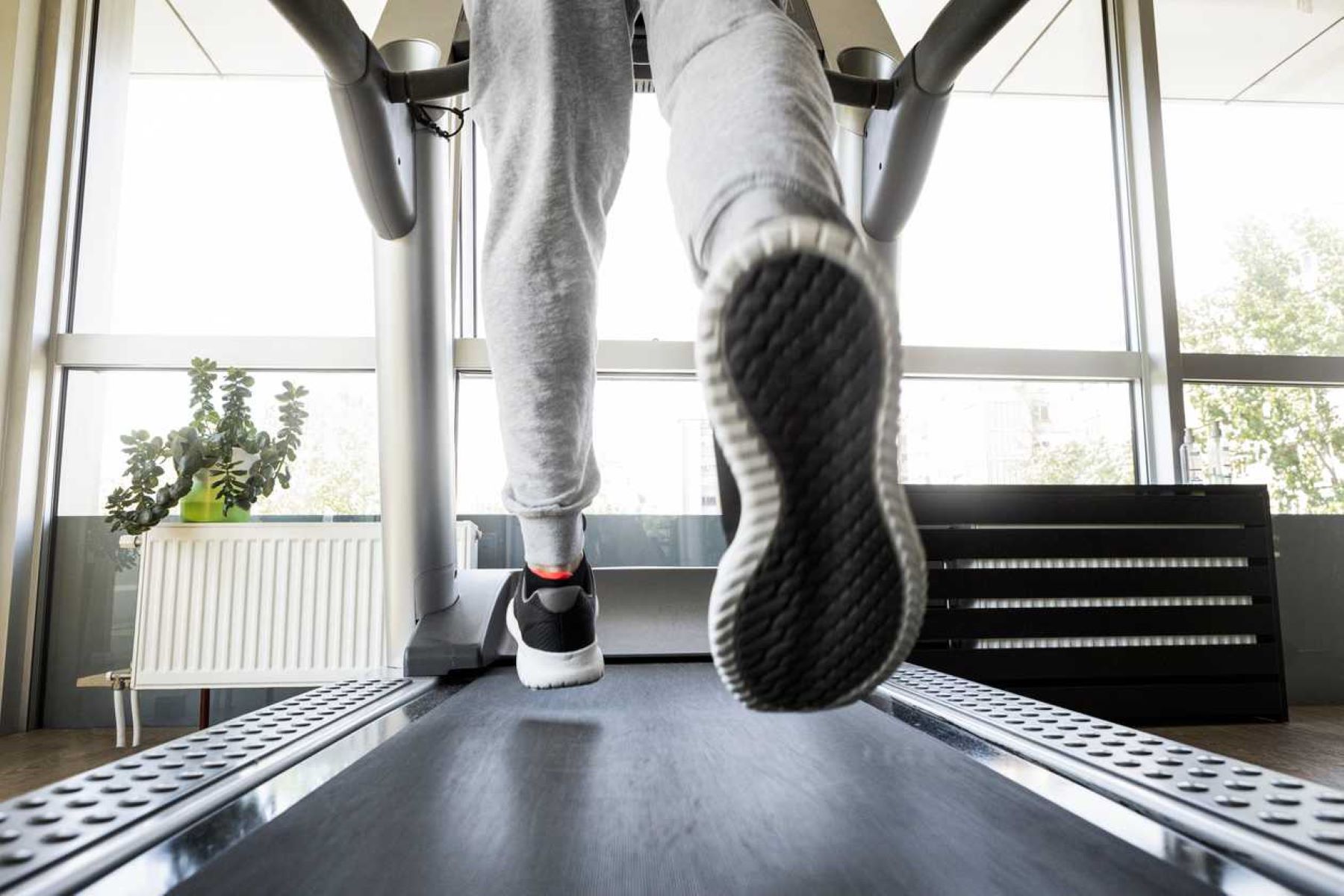

Featured
Why Is My Treadmill Belt Moving To One Side
Modified: August 19, 2023
Discover why your treadmill belt is moving to one side. Find the featured solutions to fix this common issue and ensure a smooth workout experience.
Introduction
Welcome to the world of fitness and wellness! If you’re a proud owner of a treadmill, you know how important it is to keep it running smoothly and efficiently. However, you may have noticed an issue with your treadmill belt – it’s moving to one side. Don’t worry; you’re not alone in facing this problem.
The movement of the treadmill belt to one side can be frustrating and can disrupt your workout routine. It affects the overall performance of the machine and can even lead to uneven wear and tear on the belt. Understanding the causes behind this issue is crucial in order to troubleshoot and fix it.
In this article, we will explore the common reasons why your treadmill belt may be moving to one side and provide practical solutions to resolve the problem. Whether you’re a seasoned fitness enthusiast or just starting your fitness journey, this article will help you keep your treadmill in top-notch condition.
From misalignment of the belt to issues with the treadmill rollers, we will delve into various factors that can contribute to this problem. By understanding these causes, you will be equipped with the knowledge to tackle the issue head-on and ensure the proper functioning of your treadmill.
So, let’s get started and unravel the mystery behind your treadmill belt moving to one side. By the end of this article, you will have a clear understanding of the possible reasons and the steps you can take to rectify the problem.
Understanding the Treadmill Belt Movement
Before we delve into the specific causes of why your treadmill belt may be moving to one side, let’s take a moment to understand how the belt movement works in a treadmill.
A treadmill operates on the principle of a motorized belt that moves along the deck. This belt is driven by a motor, resulting in continuous movement. The user walks, jogs, or runs on the belt, creating a natural running or walking surface. The smooth and consistent movement of the belt is essential for a comfortable and safe workout experience.
However, if you’ve noticed that the treadmill belt is shifting to one side during your workout, it indicates an issue with the alignment and balance of the belt. This misalignment can lead to several problems, including uneven wear, belt slippage, and an unstable walking surface.
It’s important to note that this issue can occur in both manual and motorized treadmills, although the underlying causes and solutions may vary. Manual treadmills rely on the user’s movement to keep the belt in motion, while motorized treadmills use a motor to drive the belt.
Now that we have a basic understanding of how the treadmill belt movement works, let’s explore the common causes behind the belt shifting to one side. By identifying these causes, you’ll be one step closer to troubleshooting and resolving the issue.
Common Causes of Treadmill Belt Moving to One Side
When your treadmill belt starts moving to one side, it can disrupt your workout routine and hinder your overall fitness goals. Understanding the common causes behind this issue is essential in order to address and resolve the problem effectively. Let’s take a look at some of the most common causes of treadmill belt movement:
- Misalignment of the Belt: One of the primary reasons for treadmill belt movement is a misaligned belt. This can occur due to improper installation, wear and tear, or even regular usage. When the belt is not aligned properly, it can lead to it shifting to one side during your workout.
- Imbalanced Tension on the Belt: Another factor that can contribute to the belt moving to one side is imbalanced tension. If the tension on one side of the belt is higher or lower than the other, it can cause the belt to veer off course. This can be caused by loose or tight bolts, worn-out tension straps, or improper adjustment of the tensioning system.
- Issues with the Treadmill Rollers: The rollers of a treadmill play a crucial role in guiding the movement of the belt. If the rollers are damaged, worn-out, or not properly aligned, they can cause the belt to slide to one side. Inspecting and maintaining the rollers regularly is important to prevent this issue.
- Uneven Floor or Surface: An uneven floor or surface can also contribute to the movement of the treadmill belt. If the floor is not level or there are inconsistencies in the surface, it can cause the belt to shift to one side. Ensuring that your treadmill is placed on a level surface can help alleviate this problem.
- Loose Bolts or Nuts: Loose bolts or nuts can impact the stability and alignment of the treadmill belt. Over time, regular usage can cause these components to become loose. If left unattended, they can lead to the belt moving to one side. Regularly checking and tightening the bolts and nuts is essential to prevent this issue.
- Worn Out Belt or Deck: The belt and deck of a treadmill experience significant wear and tear with repeated usage. If the belt is worn-out or the deck is damaged, it can cause the belt to shift to one side. Regular maintenance and replacement of the belt and deck can help prevent this problem.
These are some of the common causes behind treadmill belt movement to one side. By identifying the specific cause in your case, you’ll be able to troubleshoot and fix the issue more effectively. In the next section, we will explore some practical steps to address these issues and restore the proper alignment and movement of your treadmill belt.
Misalignment of the Belt
One of the primary causes of a treadmill belt moving to one side is a misalignment of the belt. This can occur due to various factors, including improper installation, regular wear and tear, or even consistent usage over time. When the belt is not aligned properly, it can lead to uneven movement and cause the belt to drift to one side.
To address this issue, follow these steps:
- Power off the treadmill and unplug it from the power source for safety.
- Start by visually inspecting the belt alignment. Look for any noticeable gaps or shifts on either side of the belt.
- Using an Allen wrench or the specific tool provided by the treadmill manufacturer, locate the rear roller bolts on both sides of the treadmill. These bolts are usually situated at the back end of the treadmill, near the rear roller.
- With the Allen wrench, loosen the bolts slightly. Be cautious not to loosen them too much, as this can cause the belt to become too loose and slip during operation.
- Once the bolts are loosened, gently shift the belt towards the center of the treadmill. Ensure that it is aligned with the sides of the treadmill deck.
- Tighten the rear roller bolts gradually and evenly on both sides. Make sure not to overtighten them, as this can lead to excessive tension and strain on the belt.
- Power on the treadmill and test the alignment by walking or jogging on it at a slow speed. Observe if the belt remains centered and does not move to either side.
- If necessary, repeat the realignment process until the belt remains centered during operation.
By realigning the treadmill belt, you can rectify the misalignment issue and ensure that it moves smoothly and evenly during your workouts. However, keep in mind that if the misalignment problem persists after several attempts, it may be necessary to consult a professional technician to assess and address the issue.
Imbalanced Tension on the Belt
An imbalanced tension on the treadmill belt can also cause it to move to one side during your workout. This imbalance can occur due to various factors, such as loose or tight bolts, worn-out tension straps, or improper adjustment of the tensioning system. It’s crucial to address this issue to ensure smooth and even movement of the belt.
To balance the tension on the treadmill belt, follow these steps:
- Start by powering off the treadmill and unplugging it from the power source.
- Locate the tension adjustment bolts or knobs on the sides of the treadmill near the front or back rollers. These bolts or knobs control the tension of the belt.
- If the belt seems loose on one side, use an Allen wrench or the specific tool provided by the treadmill manufacturer to tighten the tension adjustment bolt or turn the knob clockwise. This will increase the tension on the respective side of the belt.
- If the belt feels tight on one side, loosen the tension adjustment bolt or turn the knob counterclockwise using the appropriate tool. This will release some tension and balance the belt.
- Make small adjustments and retest the tension by walking or jogging on the treadmill at a slow speed. Observe if the belt remains centered during operation.
- Continue adjusting the tension bolts or knobs until the belt is evenly tensioned and no longer drifts to one side.
- Once the belt is properly tensioned, tighten the tension adjustment bolts securely to ensure they do not loosen with regular use.
- Power on the treadmill and test the belt’s tension and alignment by walking or jogging at a moderate speed. Pay attention to any side movements and make minor adjustments if necessary.
By adjusting the tension of the treadmill belt, you can achieve a balanced and even movement. However, if you encounter any difficulties or if the issue persists, it’s advisable to consult a professional technician who can diagnose and correct any underlying problems with the tensioning system.
Issues with the Treadmill Rollers
The rollers of a treadmill play a crucial role in guiding the movement of the belt. If there are issues with the treadmill rollers, it can cause the belt to slide and move to one side during your workout. Damaged or misaligned rollers can disrupt the smooth operation of the treadmill and lead to an uneven belt movement.
To address issues with the treadmill rollers, follow these steps:
- Power off the treadmill and unplug it from the power source for safety.
- Locate the adjustment screws or bolts on the front and back rollers of the treadmill. These screws or bolts allow you to adjust the position and alignment of the rollers.
- Use the appropriate tool, such as an Allen wrench, to loosen the adjustment screws or bolts on both the front and back rollers. Avoid loosening them excessively to prevent misalignment.
- Visually inspect the rollers for any signs of damage, such as cracks or excessive wear. If any damage is detected, it may be necessary to replace the rollers altogether.
- If the rollers appear to be in good condition, gently adjust their position to ensure they align properly with the treadmill belt. Make small adjustments and check the alignment after each adjustment.
- Tighten the adjustment screws or bolts on the rollers securely, ensuring they are snug but not over-tightened. This will lock the rollers in their new aligned position.
- Power on the treadmill and test the belt’s movement by walking or jogging at a moderate speed. Observe if the belt remains centered and does not move to either side.
- If necessary, repeat the roller adjustment process until the belt stays aligned during operation.
Regular inspection and maintenance of the treadmill rollers are essential to prevent issues with belt movement. If you continue to experience problems with the rollers or if the belt still moves to one side even after adjustments, it’s advisable to seek assistance from a professional technician who can further assess and resolve any underlying issues with the rollers.
Uneven Floor or Surface
An uneven floor or surface can also contribute to the movement of the treadmill belt, causing it to shift to one side during your workout. If the floor beneath your treadmill is not level or if there are inconsistencies in the surface, it can lead to an unstable walking or running experience.
To address the issue of an uneven floor or surface, follow these steps:
- Power off the treadmill and unplug it from the power source.
- Check the placement of your treadmill and ensure it is positioned on a level surface. Use a spirit level or a similar tool to determine if the floor is even.
- If the floor is not level, adjust the position of the treadmill to find a more even area. You may need to move it to a different location or use leveling pads or shims to compensate for any unevenness.
- Place the leveling pads or shims under the specific areas of the treadmill where the floor is uneven. This will help create a more stable and level surface for the treadmill to sit on.
- Check the levelness of the treadmill by using a spirit level on the deck. Make adjustments as needed to ensure the deck is parallel to the floor.
- Power on the treadmill and test the belt’s movement by walking or jogging at a slow pace. Ensure that the belt remains centered and does not move to one side.
- If necessary, readjust the positioning of the treadmill or make further modifications to level the floor or surface. Repeat the testing process until the belt stays aligned during operation.
Ensuring a level floor or surface for your treadmill is essential to maintain the proper alignment and functioning of the belt. By addressing the issue of an uneven floor, you can prevent the belt from moving to one side and create a more comfortable and stable workout environment.
Loose Bolts or Nuts
Loose bolts or nuts on a treadmill can have a significant impact on the stability and alignment of the belt. Over time, regular usage and vibrations can cause these components to become loose, resulting in the belt moving to one side during your workout. It’s important to regularly check and tighten these fasteners to ensure proper belt alignment.
To address loose bolts or nuts on your treadmill, follow these steps:
- Power off the treadmill and unplug it from the power source for safety.
- Inspect the various components of your treadmill, including the frame, deck, and motor cover, to identify any loose bolts or nuts.
- Using the appropriate tool, such as a wrench or screwdriver, tighten any loose bolts or nuts that you find. Ensure that they are snug but not overtightened.
- Pay particular attention to the bolts and nuts that secure the frame and deck of the treadmill, as they play a crucial role in maintaining proper alignment.
- After tightening the bolts and nuts, power on the treadmill and test the belt’s movement by walking or jogging at a moderate speed.
- Observe if the belt remains centered and does not veer to one side. If necessary, make additional adjustments to the bolts or nuts until the belt stays aligned during operation.
- Create a regular maintenance schedule to check and tighten the bolts and nuts on your treadmill. This will help prevent future issues with belt movement and ensure the overall stability of the machine.
Regularly tightening loose bolts and nuts is an essential part of treadmill maintenance. By keeping these fasteners secure, you can maintain the proper alignment of the belt and prevent it from shifting to one side during your workouts.
Worn Out Belt or Deck
A worn-out belt or deck can be a common cause of the treadmill belt moving to one side. Over time, with regular usage, the treadmill belt and deck can experience significant wear and tear, leading to an uneven and unstable walking or running surface. It’s important to regularly inspect and replace these components to maintain proper belt alignment.
To address a worn-out belt or deck on your treadmill, follow these steps:
- Power off the treadmill and unplug it from the power source for safety.
- Visually inspect the treadmill belt for excessive wear, such as fraying, cracks, or signs of significant damage. Additionally, check the deck for any signs of warping or noticeable wear.
- If the belt appears worn-out or damaged, consult your treadmill’s user manual or contact the manufacturer to determine the appropriate replacement belt. Follow the manufacturer’s instructions for replacing the belt.
- If the deck is worn or warped, it may need to be resurfaced or replaced. This process typically requires the assistance of a professional technician, so consult your treadmill’s user manual or contact the manufacturer for guidance.
- Once the new belt or deck is installed, ensure that it is properly aligned with the treadmill rollers and tensioned correctly. Refer to the user manual or manufacturer’s instructions for specific guidelines.
- Power on the treadmill and test the belt’s movement by walking or jogging at a moderate speed.
- Observe if the belt remains centered and does not shift to one side. If necessary, make minor adjustments to the alignment or tension until the belt stays aligned during operation.
- Establish a regular maintenance routine to inspect the condition of the treadmill belt and deck. Regularly replace these components as needed to prevent issues with belt movement and maintain a safe and stable workout surface.
By replacing worn-out treadmill belts or decks, you can restore the proper alignment and stability of the belt, preventing it from shifting to one side. Regular maintenance and replacement of these components are essential for the overall performance and longevity of your treadmill.
How to Troubleshoot and Fix Treadmill Belt Alignment Issues
Troubleshooting and fixing treadmill belt alignment issues is crucial to ensure a smooth and stable workout experience. By addressing these issues promptly, you can prevent further damage to the treadmill and maintain proper belt alignment. Here are some practical steps to troubleshoot and fix treadmill belt alignment issues:
- Identify the cause: Start by identifying the specific cause of the belt alignment issue. It could be due to a misalignment of the belt, imbalanced tension, issues with the treadmill rollers, an uneven floor or surface, loose bolts or nuts, or a worn-out belt or deck.
- Inspect and clean: Thoroughly inspect the treadmill belt, deck, rollers, and other components for wear, damage, or loose parts. Clean any debris or dirt that may be affecting the belt’s movement.
- Align the belt: If the belt is misaligned, use the appropriate tools to adjust its position. Loosen the rear roller bolts, shift the belt towards the center, and gradually tighten the bolts evenly on both sides until the belt is properly aligned.
- Balance the tension: Imbalanced tension can cause the belt to move to one side. Adjust the tension bolts or knobs on both sides of the treadmill to achieve equal and proper tension. Test the belt’s movement after each adjustment to ensure it remains centered.
- Check and adjust the rollers: Inspect the treadmill rollers for any damage or misalignment. If needed, adjust their position to ensure they align correctly with the belt. Tighten the adjustment screws securely once the rollers are properly positioned.
- Level the floor or surface: A level floor or surface is essential for maintaining belt alignment. Use leveling pads or shims to compensate for any unevenness in the floor. Make sure the treadmill is placed on a stable and level surface.
- Tighten loose bolts or nuts: Regularly check for loose bolts or nuts and tighten them as needed. Pay close attention to the frame, deck, and other critical areas of the treadmill. Ensure the bolts are snug but not overtightened.
- Replace worn-out components: If the belt or deck is worn-out or damaged, replace them with appropriate replacements recommended by the manufacturer. Follow the instructions provided to ensure proper installation and alignment.
- Regular maintenance: Establish a routine for inspecting and maintaining your treadmill. This includes checking the belt alignment, tension, rollers, and other components. Regularly clean the treadmill and lubricate the belt as recommended by the manufacturer.
By following these troubleshooting steps and addressing the specific issues affecting belt alignment, you can restore the smooth and even movement of your treadmill. Regular maintenance and timely repairs are essential to prevent further problems and extend the lifespan of your treadmill.
Adjusting the Belt Alignment
One of the key steps in troubleshooting and fixing treadmill belt alignment issues is adjusting the belt alignment. An improperly aligned belt can lead to uneven movement and cause it to shift to one side during your workout. Here’s how you can adjust the belt alignment:
- Power off the treadmill and unplug it from the power source for safety.
- Visually inspect the belt alignment by looking for any noticeable gaps or shifts on either side of the belt.
- Locate the adjustment bolts on the rear of the treadmill near the rear roller. These bolts are usually Allen bolts, and you may need an Allen wrench to adjust them.
- Loosen the adjustment bolts slightly. Be mindful not to loosen them too much to avoid making the belt too loose.
- Gently shift the belt towards the center of the treadmill, ensuring it aligns with the sides of the treadmill deck.
- Begin tightening the adjustment bolts gradually and evenly on both sides. Be cautious not to overtighten them, as it can strain the belt.
- Power on the treadmill and test the belt’s alignment by walking or jogging at a slow speed. Observe if the belt remains centered and does not move to one side.
- If necessary, repeat the adjustment process until the belt stays aligned during operation.
Adjusting the belt alignment is a crucial step in fixing belt movement issues. By ensuring the belt is properly aligned, you can prevent it from shifting to one side and maintain a smooth and stable workout experience. However, if the alignment problem persists or you encounter difficulties during the adjustment process, it’s recommended to seek assistance from a professional technician to properly realign the belt.
Balancing the Belt Tension
Another important step in troubleshooting treadmill belt alignment issues is balancing the belt tension. Imbalanced tension on the belt can cause it to veer off to one side during your workout, leading to an uneven and unstable running or walking experience. Balancing the belt tension will help ensure smooth and even movement. Here’s how you can balance the belt tension:
- Power off the treadmill and disconnect it from the power source for safety.
- Locate the tension adjustment bolts or knobs on both sides of the treadmill, near the front or back rollers.
- If the belt is loose on one side, use an appropriate tool, such as an Allen wrench, to tighten the tension adjustment bolt or turn the knob clockwise. This will increase the tension on that side of the belt.
- If the belt feels tight on one side, loosen the tension adjustment bolt or turn the knob counterclockwise using the appropriate tool to release some tension and balance the belt.
- Make small adjustments to the tension bolts or knobs and retest the belt’s tension by walking or jogging on the treadmill at a slow speed.
- Observe if the belt remains centered and does not drift to one side during operation. Continue adjusting the tension bolts or knobs until the belt is evenly tensioned.
- Ensure the tension adjustment bolts or knobs are tightened securely to prevent them from loosening during regular use.
- Power on the treadmill and retest the belt’s movement by walking or jogging at a moderate speed. Pay attention to any side movements and make minor adjustments if necessary.
By balancing the belt tension, you can prevent the belt from moving to one side and ensure a smooth and stable workout on your treadmill. Regularly check and adjust the belt tension to maintain proper alignment and maximize the lifespan of your treadmill.
Inspecting and Replacing Treadmill Rollers
The treadmill rollers play a crucial role in guiding the movement of the belt. If there are issues with the rollers, such as damage or misalignment, it can cause the belt to slide and move to one side while you’re working out. Inspecting and maintaining the rollers regularly can help prevent belt alignment problems. Here’s how you can inspect and replace treadmill rollers:
- Power off the treadmill and unplug it from the power source for safety.
- Visually inspect the rollers for any signs of wear, damage, or misalignment. Look for cracks, flat spots, or uneven wear on the surface of the rollers.
- If you notice any damage or misalignment, consult your treadmill’s user manual or contact the manufacturer for guidance on roller replacement.
- Order replacement rollers from the manufacturer or an authorized dealer based on the specifications provided in the user manual.
- Follow the instructions provided by the manufacturer to remove the old rollers. This may involve loosening screws or bolts that secure the rollers in place.
- Place the new rollers in the appropriate positions, ensuring they align correctly with the belt. Secure them with screws or bolts as instructed by the manufacturer.
- Perform a visual and manual inspection of the rollers to ensure they rotate smoothly and align properly with the belt.
- Power on the treadmill and test the belt’s movement by walking or jogging at a moderate speed. Observe if the belt remains centered and does not move to one side.
- If the belt still moves to one side or if you encounter further difficulties with the rollers, it’s recommended to seek assistance from a professional technician. They can diagnose any underlying issues and ensure proper roller alignment.
Regular inspection and maintenance of the treadmill rollers are vital to prevent belt alignment problems. By promptly replacing damaged or misaligned rollers, you can ensure the smooth and stable movement of the belt during your workouts.
Ensuring a Level Surface for the Treadmill
An uneven floor or surface can contribute to the movement of the treadmill belt, causing it to shift to one side during your workout. To prevent this issue, it’s important to ensure that the treadmill is placed on a level surface. Here’s how you can ensure a level surface for your treadmill:
- Power off the treadmill and unplug it from the power source.
- Check the current placement of the treadmill and examine the floor or surface beneath it.
- Use a spirit level or a similar tool to determine if the floor or surface is level. Place the spirit level in different directions to get an accurate reading.
- If the floor or surface is not level, you have a few options to create a level surface for your treadmill:
- If the unevenness is minor, you can adjust the leveling feet on the bottom of the treadmill. Rotate the feet clockwise or counterclockwise to raise or lower specific corners of the treadmill until it becomes level.
- If the unevenness is more significant, you can use leveling pads or shims. Place the leveling pads or shims under the specific areas of the treadmill where the floor is uneven. Adjust the number and thickness of the pads or shims as needed until the treadmill is level.
- In extreme cases, you may need to relocate the treadmill to a different area with a more level floor or have a professional contractor address the unevenness of the surface.
- Once you’ve made the necessary adjustments or used leveling pads/shims, recheck the levelness using a spirit level to ensure the surface is now evenly balanced.
- Power on the treadmill and test the belt’s movement by walking or jogging at a slow pace. Observe if the belt remains centered and does not drift to one side.
- If necessary, make further adjustments to the leveling feet or pads/shims until the belt stays aligned during operation.
- Regularly check the levelness of the surface and make any necessary adjustments as part of your treadmill maintenance routine.
Ensuring a level floor or surface for your treadmill is essential to maintaining proper belt alignment. By following these steps, you can create a stable and level environment for your treadmill workouts and prevent the belt from moving to one side.
Tightening Loose Bolts or Nuts
Loose bolts or nuts on a treadmill can contribute to belt alignment issues, causing it to move to one side during your workout. Regular usage and vibrations can cause these components to become loose over time, affecting the stability and alignment of the treadmill belt. To address this issue, tightening loose bolts or nuts is essential. Here’s how you can do it:
- Power off the treadmill and unplug it from the power source for safety.
- Inspect the various components of your treadmill, including the frame, deck, motor cover, and other critical areas, for any loose bolts or nuts.
- Using the appropriate tool, such as a wrench or screwdriver, tighten any loose bolts or nuts that you find. Use steady and controlled force to prevent overtightening or stripping.
- Pay specific attention to the bolts and nuts that secure the frame, deck, and other key components of the treadmill, as they directly impact the alignment and stability of the belt.
- After tightening the bolts and nuts, power on the treadmill and test the belt’s movement by walking or jogging at a moderate speed.
- Observe if the belt remains centered and does not move to one side. If necessary, make additional adjustments to loose bolts or nuts until the belt stays aligned during operation.
- Establish a regular maintenance routine to check and tighten bolts and nuts on your treadmill. Regularly inspect and tighten these components to prevent further loosening and maintain a safe and stable workout surface.
Tightening loose bolts and nuts is an integral part of treadmill maintenance. By securing these fasteners, you can ensure the proper alignment and stability of the belt, preventing it from shifting to one side during your workouts. Remember to follow the manufacturer’s provided guidelines and recommendations when tightening bolts and nuts to avoid damaging the treadmill components.
Replacing a Worn Out Belt or Deck
A worn-out belt or deck can significantly contribute to treadmill belt movement, causing it to shift to one side during your workouts. With regular usage and time, both the belt and deck can experience wear and tear, resulting in an uneven and unstable walking or running surface. To address this issue, it’s important to inspect and replace the worn-out components. Here’s how you can replace a worn-out belt or deck:
- Power off the treadmill and unplug it from the power source for safety.
- Visually inspect the treadmill belt for signs of wear and damage, such as fraying, cracks, or significant thinning. Additionally, examine the deck for any warping or noticeable wear.
- If the belt appears worn-out or damaged, consult the treadmill’s user manual or contact the manufacturer to determine the compatible replacement belt. Follow the manufacturer’s instructions for replacing the belt. They may provide specific tools or steps for your specific treadmill model.
- If the deck is worn or warped, it may need to be resurfaced or replaced. Resurfacing the deck may require the assistance of a professional. In the case of replacing the deck, follow the instructions provided in the user manual or seek guidance from the manufacturer.
- Order the replacement belt or deck from the manufacturer or an authorized dealer, ensuring it matches the specifications mentioned in the user manual.
- Follow the manufacturer’s instructions to remove the old belt or deck. This may involve loosening screws or bolts that secure them in place.
- Install the new belt or deck according to the manufacturer’s guidelines. Ensure proper alignment and tension during the installation process.
- Perform a final visual inspection to confirm the belt or deck is correctly positioned and aligned with the treadmill’s rollers.
- Power on the treadmill and test the belt’s movement by walking or jogging at a moderate speed. Observe if the belt remains centered and does not shift to one side.
- Establish a regular maintenance routine to inspect the condition of the belt and deck. Regularly replace these components as needed to prevent further issues with belt movement and maintain a safe and stable workout surface.
By replacing a worn-out belt or deck, you can restore proper alignment and stability to your treadmill. Regular maintenance and timely replacement of these components are essential for the longevity and efficient operation of your treadmill.
Conclusion
Troubleshooting and fixing treadmill belt alignment issues is crucial for maintaining a smooth and stable workout experience. Whether your treadmill belt is moving to one side due to misalignment, imbalanced tension, issues with the rollers, an uneven floor, loose bolts or nuts, or a worn-out belt or deck, it’s important to address these problems promptly. By following the steps outlined in this article, you can effectively troubleshoot and resolve these issues.
Remember to visually inspect and clean your treadmill regularly, ensuring that all components are in good condition. Adjusting the belt alignment and balancing the tension are vital steps to maintain proper belt movement. Additionally, inspecting and, if necessary, replacing worn-out treadmill rollers can ensure a smooth and even running surface. Checking and leveling the floor or surface can also help prevent belt alignment problems.
Tightening loose bolts or nuts on your treadmill is crucial for maintaining stability, while replacing worn-out belts or decks is necessary to restore proper alignment and functionality. Regular maintenance, including inspections and adjustments, is key to preventing future belt alignment issues.
By taking the time to troubleshoot and fix treadmill belt alignment issues, you can ensure a safe, comfortable, and enjoyable workout session every time. Remember, if you encounter any difficulties or if the issues persist, it’s advisable to consult a professional technician who can provide expert guidance and assistance specific to your treadmill model.

